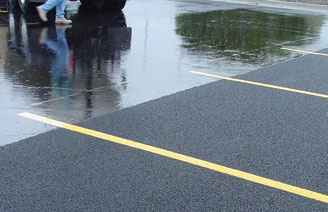I repeat what was said in other thread about run off areas and, believe me, I really, really, really
read before write because I work on road safety:
1. Passive measures on car (seat belts, roll hoops, skirts in cranes (!?)) are the least effective for car occupants' safety (and, ehem, that phrase
doesn't mean they are ineffective, puhleeze, buckle up).
2. Passive measures on the track (barriers, elimination of fixed object, treatment of slopes on lateral areas, run off areas) are the second least effective measures
3. Active measures that point towards the avoidance of accidents are the preferred way for safety.
This way of thinking, of course, includes
suspension of races under heavy rain, in the dark, at twilight of sunset, where aquaplaning is a very certain and grave risk.
The fact that only one in a hundred skids results in a mortal accident does not mean that
the fault of this accident doesn't rest on the shoulders of race directors and fans that find entertaining to watch cars racing under the rain (yes, I'm talking about you and me).
Those persons in this thread that (smartly) deduced brake distances with friction coefficients of 0.7 could ponder that under rain this coefficient drops to 0.1 and when you aquaplane it drops to zero,
no matter what run off area you have, its material, the barriers, the elimination of objects, or truck skirts (which are unheard of).
An inconvenient truth: friction coefficients vs speed for different amounts of water

Allow me to write this in fat italic letters (although I have slim hopes of the concept sinking among a veritable rain (ha, ha!) of original (and very respectable, of course, although a tad STUPID

because that's not how engineering work) ideas.
Under rain your ability to turn is one third of your ability on dry tracks, even at 60 kph, even with downforce, even with only one centimeter of water, even with nice rules for safety cars and even with dashboard yellow lights.
I repeat again what I have said other times insisting on saying anew what I've already said (redundancy anyone?) about racing under the rain.
When you are at 60 cm of height with no windshield wipers and just a visor separating your eyes from water being thrown at you by a car running at 300 kph you cannot see sh1t.
It's the asphalt, stupid. Simple: porous asphalt.

These surfaces are
mandatory on highways through Europe. Why they are not in racing circuits escape me.
Look, ma! No water! Miracles of modern science (1970 is modern apparently)
 Is it magic? Do they use a giant hairdryer? Is Hermione Granger around? Did FIA write (yet another) rule about safety cars? No, kids! It's EVEN better: it's porous asphalt!
Is it magic? Do they use a giant hairdryer? Is Hermione Granger around? Did FIA write (yet another) rule about safety cars? No, kids! It's EVEN better: it's porous asphalt!

It's candy mountain, Charlie...





